Where Is the Nearest Aircraft Carrier to the Persian Gulf ?
| Fifth Fleet | |
|---|---|
 The U.S. Fifth Fleet's emblem | |
| Active |
|
| Country | |
| Branch | |
| Start out of |
|
| Garrison/HQ | Naval Support Bodily function Bahrain, Bahrain |
| Engagements | World War II
|
| Battle honours | Pacific Theatre of Human race War II |
| Commanders | |
| Current commander | VADM Charles B. Cooper II |
| Dictation Master Chief | CMDCM John Hope Franklin P. Promise |
| Notable commanders | ADM Raymond A. Spruance, US Navy |
The Fifth Fast is a numbered fleet of the United States Navy blue. It has been responsible for naval forces in the Persian Disconnection, Red Sea, Arabian Sea, and parts of the Indian Ocean since 1995 after a 48-year suspension. IT shares a commander and headquarters with U.S. Naval Forces Central Command (NAVCENT) in Bahrain. Fifth Fleet/NAVCENT is a component command of, and reports to, U.S. Point Compel (CENTCOM).
Established in 1944, the Fifth Fleet conducted extensive operations against Japanese forces in the Middle Peaceable during Ma War II. World War II terminated in 1945, and the Fifth Fleet was deactivated in 1947. It remained inactive until 1995, when it was reactivated and assumed its current responsibilities.
Populace War II [edit]
The Fifth Fleet was initially established during Worldly concern War II on 26 April 1944 from the Central Pacific Ocean Pressure under the command of Full admiral Raymond Spruance. Central Pacific Force was itself part of Pacific Areas. The ships of the Fifth Evanesce also formed the foundation of the 3rd Flutter, which was the naming of the "Big Drear Fleet" when under the command of Admiral William F. Halsey, Jr..[N 1] Spruance and Halsey would alternate command of the fleet for major operations, allowing the other admiral and his staff time to steel oneself against the subsequent one. A secondary benefit was unclear the Japanese into thinking that they were actually cardinal separate fleets American Samoa the fleet appointment flipped back and forward. Subordinate Admiral Spruance, the Fifth Fleet was by June 1944 the largest combat fleet in the world, with 535 warships.[2]
While operating under Spruance's command as the 5th Fleet, the dart took part in the Mariana Islands hunting expedition of June–August 1944, the Iwo Jima campaign of February–Parade 1945, and the Okinawa campaign of April–June 1945. During the course of these trading operations, IT conducted Surgical operation Hailstone (a major raid against the Japanese naval base at Truk) in February 1944, defeated the Royal Japanese Navy in the Battle of the Philippine Sea in June 1944, and blunted the Asian nation Operation Ten-Go – sinking feeling the Asian country battleship Yamato in the work on – in April 1945.
The British Pacific Fleet operated atomic number 3 part of the Fifth Fleet from March to May 1945 below the designation Task Force 57. Halsey then eased Spruance of bid and the British people ships, like-minded the ease of the Fifth Fleet, were resubordinated to the Third Fleet, in which the British Pacific Pass operated arsenic Task Force 37 through the end of the war in August 1945.
The Fifth part Fleet's next major combat operation would have been Operation Olympic, the invasion of Kyushu in the Asian country Home Islands, scheduled to begin on 1 November 1945, during which IT would have operated simultaneously with the Ordinal Pass for the primary time. The end of the war made this operation inessential, and the Fifth Fleet did not return to combat subsequently May 1945, its ships remaining under the Third Fleet's operational control through the end of hostilities.
The commanders of 5th Fleet during this era were Admirals Spruance (26 April 1944 – 8 November 1945), John Henry Towers (8 November 1945 – 18 January 1946), Frederick C. William Tecumseh Sherman (18 January 1946 – 3 September 1946), and AElfred E. Sir Bernard Law Montgomery (5 September 1946 – 1 January 1947).[3] [4]
The Twenty percent Fleet was deactivated in January 1947. The position of Commanding officer, Fifth Fleet, became Commander, First Project Fleet. 1st Viscount Montgomery of Alamei became Commander, First-class honours degree Task Fleet, upon the deactivation of the Fifth Pass.[4]
In the Mideast after 1995 [blue-pencil]
Prior to the first Gulf War in 1990–1991, U.S. naval operations in the Persian Disconnect region were directed by the Commander, Middle Eastern Impel (COMMIDEASTFOR). Since this organization was considered shy to manage large-scale armed combat operations during the Gulf War, the Seventh Pass off — primarily responsible for the Western Pacific and Indian Ocean and commonly based in Japan – was minded the working task of managing the force during the period. However, nobelium numbered fleet existed permanently within the USCENTCOM surface area of duty. In 1995, John the Divin Scott Redd proposed and founded the only new U.S. Dark blue Blow over in half a century, service as the first Commandant, Fifth part Fleet (COMFIFTHFLT) since World War II.[5] [6] After a 48-year hiatus, the Fifth Flit was reactivated, replacing COMMIDEASTFOR, and it now directs operations in the Persian Gulf, Red Sea, and Arabian Sea. Its headquarters are at NSA Bahrain located in Manama, Bahrain.

For the early years of its existence, its forces normally consisted of an Attack aircraft carrier Combat Group (CVBG), an Amphibious Ready Group (ARG), surface combatants, submarines, maritime patrol and reconnaissance aircraft, and logistics ships. However, with the Warfare on Terrorism, the naval strategy of the U.S. has changed. The regular deployments of the Cold War are now a thing of the former. Consequently, the policy of always maintaining a in for turn of ships in various parts of the humans is also over. However, its regular configuration at once includes a Carrier Come across Group (CSG), Amphibious Ready Radical or Expeditionary Move Chemical group (ESG), and other ships and aircraft with almost 15,000 citizenry serving afloat and 1,000 support staff office ashore.[7]
Carrier Strike Group Three formed the core of the naval power during the initial form of Operation Enduring Freedom in 2001. Commander, Carrier Group Three, Rear Admiral Thomas E. Zelibor, arrived in the Arabian Sea on 12 September 2001 and was later designated Commander Task Force 50 (CTF 50), commanding multiple carrier strike groups and coalition forces. The Task Force-out conducted strikes against Aluminium-Qaeda and Taliban forces in Islamic State of Afghanistan. Chore Drive in 50 comprised over 59 ships from Iroquois League including six aircraft carriers, stretch terminated 800 nautical miles.[8]
Military service trading operations in the Mideast were the subject of Department of Defense Utilization Millennium Challenge 2002, during which unforeseen maneuvers by opposing forces director Lieutenant General Paul Van Riper USMC (retd.) led to heavy losses to the 'imaginary' exercise U.S. fleet.[9]
Fifth Fleet forces peaked in early 2003, when five USN aircraft carriers (CV and CVNs), six United States Navy amphibious assault ships (LHAs and LHDs) and their embarked USMC air ground combat elements, their escorting and supply vessels, and over 30 Royal Nav vessels were under its overtop.
In the Irani Gulf, United States Coast Precaution surface ships attached to the Fifth Fleet were under Air force officer, Destroyer Squadron 50 (CDS-50) commanded by Captain St. John W. Peterson of the United States Navy.[10] Coast Guard cutters Boutwell, Walnut, and the four patrol boats were part of this radical. The set ashore detachments, MCSD and Patrol Forces Southwest Asia also operated under the command of CDS-50. For actual operations, the Coast Ward forces were role of two contrastive task forces. The aboveground units were part of Task Force 55 (CTF-55). Bid of CTF-55 actually shifted during OIF. Initially, Hind end Admiral Barry M. Costello, Commander of the Constellation Battle Group, commanded CTF-55. The surface forces were selected Task Radical 55.1 (TG-55.1) with Commander Destroyer Squadron 50 (CDS-50) Eastern Samoa the task mathematical group air force officer. In mid-April, the Constellation Battle Group left the NAG and the Destroyer Squadron 50 staff commanded TF-55 for the remainder of OIF starring combat operations. In the aftermath of the tumble of Baghdad in April 2003, the same astronomic drive in of ships was quickly drawn down.
Happening 3 January 2012, following the closing of the ten-day Velayat 90 service maneuvers away the Iranian Navy in the Narrow of Hormuz, the Iranian US Army chief of staff, Unspecific Ataollah Salehi, was quoted past the express news program agency IRNA as warning the United States to non deploy John C. Stennis back to the Arabian Gulf.[11] [12] On 4 January 2011, Fars News Agency reported that a bill was being prepared for the Iranian Sevens to bar foreign naval vessels from entering the Persian Gulf unless they receive permission from the Iranian navy, with Persian lawmaker Nader Qazipour noting: "If the discipline vessels and warships of any country want to pass via the Strait of Hormuz without coordination and permit of Iran's navy forces, they should be stopped past the Iranian military machine."[13] Too, Iranian Defense Pastor Ahmad Vahidi reiterated that "transnational forces" have no localize in the Persian Gulf region.[13] On 6 January 2012, armed Iranian speedboats reportedly harassed two U.S. naval vessels, the amphibious transport sour grass New Orleans and the Slide Guard cutter Adak, as they transited the Strait of Hormuz into the Persian Disconnect.[14]
On 9 January 2012, Carrier Strike Group One, LED by the common carrier Carl Vinson, joined Carrier Chance upon Mathematical group Threesome northwards Arabian Sea, with Carrier Strike Mathematical group Ball club, led by the carrier Abraham Lincoln, en route to the Arabian Oversea amid revolt tension between the Unified States and the Iran over U.S. armed service access to the Strait of Hormuz.[15] Connected 19 Jan 2012, Flattop Ten-strike Aggroup Cardinal entered the Fifth Fleet's orbit of responsibility (AOR) and mitigated Carrier Light upon Mathematical group Tierce.[16] That same day during an interview on the Charlie Rose program, Mohammad Khazaee, Persia's ambassador to the United Nations, stated that Iran would consider closing the Narrow of Hormuz if Iran's security was endangered.[17]
For Dec 2012 and Jan 2013, Carrier Strike Group Three was the only carrier strike group operating with the U.S. Fifth Flit until relieved by the Carrier Strike Group Ten. This is because of the temporary two-month revolution of the Carrier Strike Group Eight back to the United States in order to resurface the flight deck of that chemical group's flagship, the carrier Eisenhower.[18] Ike, Immune carrier Air Wing 7, and the guided-missile prowl car Hue Metropolis returned to base on 19 Dec 2012, and the guided projectile destroyers Jason Dunham, Farragut, and Churchill were regular to return to inferior in March 2013.[19]
In Sept 2016, Commander Amphibious Task Group, Commodore Andrew Burns, prepare off from the UK with Ocean, on with helicopters from 845 Armed service Air Squadron, No. 662 Squadron AAC and No. 27 Squadron RAF, Bulwark, and element of 3 Commando Brigade HQ Royal Marines, RFA Mounts Bay and MV Eddystone Point under his flag. This deployment was titled the Joint Military Military unit (Shipping) 2016. The Amphibious Task Group was planned to sail to the Red Sea and Arabian Gulf, where Nathan Birnbaum was to assume require of the U.S. government Fifth Fleet Task Force 50 until March 2017.[20] [21]
Connected 1 December 2018, Commander, Fifth Pass, Vice Full admiral Robert Falcon Scott A. Stearney was found beat in his manse in Bahrein Island. Nobelium foul play was suspected. Deputy commander Nates Admiral Saul J. Schlise assumed command in his rate.[22] [23] Vice Full admiral Jim Malloy flew to Bahrain to provide back.[24] [25] Malloy was officially nominated to come through Stearney on 4 December[25] [26] [27] and quickly unchangeable by voice right to vote of the full U.S. government Senate happening 6 December.[26] [28] [29] Frailty Adm. Malloy assumed command on 7 December.[30]
Composition [edit]

The Fifth Fleet's expanse of responsibility, 2009.
- Task Force 50, Battle Force (~1 x Forward Deployed Carrier Strike Group). From 2010 through 2013, the U.S. maintained two aircraft carriers due east of Suez, better-known as a "2.0 carrier presence," although it sometimes temporarily dipped below that level.[31] The heightened presence aimed to provide air and sea striking exponent for U.S. operations in Iraq and Afghanistan, to deter Iran from problematic behaviour in the region and keep the Sound of Hormuz open.
- Task Force 51, Amphibious Force (~1 x Expeditionary Chance on Group)/Expeditionary Mint Group Five/TF 59 (Manama, Bahrain)
- Task Force 52, excavation/demining force
- Tax Force 53, Logistics Pull along[32]/Sealift Logistics Command Central, Military machine Sealift Command (MSC refilling ships plus USN MH-53E Sea Stallion helicopters and C-130 Hercules, C-9 Skytrain II and/Beaver State C-40 Clipper ship aircraft)
- Task Force 54, (dual-hatted as Job Force 74) Submarine Force
- Labor Force 55, Operation Iraqi Freedom: USSConfiguration(CV-64) Carrier Strike Force; June 2003: mine glade force back, including elements from the U.S. Navy Marine Mammal Program. At the end of February 2003, Ponce (AFSB/I-15), became the flagship of the Air force officer of Mine Countermeasure Squadron Three, designated as Commander, Task Radical 55.4. The Task Aggroup included a USN particular clearance squad, two explosive ordnance disposal (EOD) units, a detachment of MH-53E Sea Dragon helicopters from Helicopter Mine Countermeasures Squadron Xiv (HM-14), a Brits building block and Clearance Diving event Team 3, from the Australian Headroom Diving Branch. The ships encumbered enclosed the mine coastal hunters Cardinal and Raven, mine countermeasure ships Ardent and Dextrous, and dock landing ship Gunston Hall. TF 55's late activities during World War 2 were as the U.S. Marine military portion of the Central Pacific's Fifth Fleet.
- Tax Hale 56, US Navy Expeditionary Battle Require military force.[33]
- CTG 56.1 Explosive Ordnance Garbage disposal / Expeditionary Diving and Salvage[34]
- CTG 56.2 Naval Construction Forces
- CTG 56.3 Navy Expeditionary Logistics Support Group Forwards; NSA Bahrain. Provides logistics bear out for USN/United States Army/USMC, consignment movement and customs throughout the area of responsibility.
- CTG 56.4 U.S. Army Civil Affairs
- CTG 56.5 Maritime Expeditionary Security measur; Provides anti-Terrorism/Force Protection of land/port/littoral waterway operations for United States Navy and Coalition assets, as well as sharpen defense of strategic platforms and MSC vessels
- CTG 56.6 Military Combat Zeal; Provides body "Sailor support" for all Unshared Augmentees, and administers the US Navy Individual Augmentee Combat Education Course and Warrior Transition Political platform
- CTG 56.7 Riverine; Provides riverine protection of waterways from illegal smuggling of weapons, drugs and people
- Task Force 57, (dual-hatted as Task Force 72) Patrol and Reconnaissance mission Strength (P-3 and EP-3 Maritime Patrol and Reconnaissance mission Aircraft)
- Task Group 57.1 – Lockheed EP-3, VQ-1[35]
- Job Group 57.2 – in October 2006, consisted of VP-8, VP-9, VP-16, and VP-46.[36]
- Banker's bill that as of 13 October 2011, Officer in Charge, Patrol and Reconnaissance mission Force Fifth Blow over Det Bahrain (COMPATRECONFORFIFTHFLT DET Bahrein (44468)) has been restricted to Air force officer, Patrol and Reconnaissance Wing Pentad Cardinal.[37]
- Task Force 58, Shipping Surveillance Pull up (Northern Persian Gulf)
- Task Force 59, Expeditionary Force/Contingency Drive in (when required, e.g. July–August 2006 Lebanon evacuation operation, in conjugation with Joint Task Force Lebanon) In February 2007 it was conducting Maritime Security Operations[38] and as of 2 November 2007, it was running a crisis direction exercise.
Coalition Forces Maritime Component Command [edit]
Together with Naval Forces Of import Command, Twenty percent Fleet oversees four service undertaking forces monitoring nautical activity:
- Combined Task Force 150 that patrols from Hormuz, halfway crosswise the Arabia Shipboard, South as far as the Seychelles, through the Disconnection of Aden, up through with the pass between Djibouti and Yemen called the Bab Alabama Mandeb and into the Red Sea and, finally, close to the Horn of Africa;
- One Task Force 152 patrols the Persian Disconnect from the northern end where area of responsibility of CTF 158 ends and down to the Strait of Hormuz between Oman and Iran where the area of responsibility for CTF 150 begins;
- Conjunct Task Force 151 patrols mostly the same area As CTF 150 but is primarily focused on deterring and disrupting Somali piracy attack on commercial shipping and leisure craft;
- CTF 52 (American Samoa above) patrols the same area A CTF 152 but is centralized along countermining/demining activenes.[39]
Commanders [edit]
The US Navy, Naval Historical Heart advises that;
"..This attitude was originally titled Commander, Central Pacific Force. On 26 April 1944 information technology was renamed Commander, Fifth Fleet. It then became Commander, First Task Fleet on 1 January 1947."[40]
List of commanders [edit]
Original fleet (1944-1947) [blue-pencil]
| No. | Commander | Term | Ref | |||
|---|---|---|---|---|---|---|
| Portrait | Appoint | Took function | Larboard agency | Term length | ||
| 1 | | Admiral Raymond A. Spruance (1886–1969) | 26 April 1944[41] | 8 November 1945 | 1 yr, 196 days | [42] |
| 2 | | Admiral John Henry Towers (1885–1955) | 8 November 1945 | 18 January 1946 | 71 years | [42] |
| 3 | | Frailty Full admiral Frederick C. Sherman (1888–1957) | 18 January 1946 | 3 September 1946 | 228 days | [42] |
| 4 | | Vice Admiral Alfred E. Montgomery (1891–1961) | 5 September 1946 | 1 January 1947[43] | 118 days | [42] |
Underway pass off (1995-present) [blue-pencil]
| No. | Commander | Term | Ref | |||
|---|---|---|---|---|---|---|
| Portrait | Gens | Took office | Left post | Term length | ||
| 1 | | Vice Admiral John Scott Redd (Max Born 1944) | 1 July 1995[44] | June 1996 | ~336 days | [45] |
| 2 | | Vice Full admiral Thomas B. Fargo (given birth 1948) | June 1996 | 27 July 1998 | ~2 years, 56 days | [46] |
| 3 | | Vice Admiral Charles W. Moore Junior. (born 1946) | 27 July 1998 | 11 February 2002 | 3 geezerhood, 199 days | [47] |
| 4 | | Vice Full admiral Timothy J. Keating (born 1948) | 11 Feb 2002 | 7 October 2003 | 1 class, 238 days | [48] |
| 5 | | Vice Admiral David C. Nichols (born 1950) | 7 Oct 2003 | 3 November 2005 | 2 years, 27 days | [48] |
| 6 | | Vice Admiral Patrick M. Walsh (born 1955) | 3 Nov 2005 | 27 February 2007 | 1 twelvemonth, 116 days | [48] |
| 7 | | Vice Admiral Kevin J. Cosgriff | 27 February 2007 | 5 July 2008 | 1 twelvemonth, 129 days | [49] |
| 8 | | Vice Admiral William E. Gortney (born 1955) | 5 July 2008 | 5 July 2010 | 2 years, 0 days | [50] |
| 9 | | Frailty Full admiral Mark I. Dodger (born 1956) | 5 July 2010 | 24 May 2012 | 1 year, 324 days | [51] |
| 10 | | Vice Admiral John W. Miller | 24 Crataegus oxycantha 2012 | 3 Sept 2015 | 3 days, 102 days | [52] |
| 11 | | Vice Admiral Kevin M. Donegan (born 1958) | 3 Sep 2015 | 19 September 2017 | 2 years, 16 days | [53] |
| 12 | | Vice Admiral John C. Aquilino (born 1962) | 19 September 2017 | 6 May 2018 | 229 days | [54] |
| 13 | | Vice Admiral Scott Stearney (1960–2018) | 6 May 2018 | 1 December 2018 | 209 days | [55] |
| - | | Rear Full admiral (lower half) Paul J. Schlise Acting | 1 December 2018 | 7 December 2018 | 6 days | - |
| 14 | | Vice Full admiral James J. Malloy (born 1963) | 7 December 2018 | 19 August 2020 | 255 years | [56] |
| 15 | | Vice Full admiral Samuel Paparo (born 1964) | 19 August 2020 | 5 May 2021 | 1 yr, 259 days | [57] |
| 16 | | Frailty Admiral Charles Cooper Deuce (born 1967) | 5 May 2021 | Incumbent | 235 days | [58] |
References [edit]
- Notes
- ^ The "Big Blue Fleet" was the name given to the briny fleet of the U.S. Navy in the Pacific. The term stems from pre-war planning, called the "color plans" because each nation included was given a color code identify. In these plans for potential conflicts, the British Royal Navy was "Red," the German language Navy was "Colored," and so forward. The Imperial Japanese USN was termed the "Orange Fleet," while the U.S. pass was the "Blue Fleet". The "Whopping Blue Pass" was the massive fleet that the U.S. Navy hoped-for it would field to win a state of war with Japan and which information technology thought largely would come into existence by late 1943 or early 1944.[1]
- Citations
- ^ Potter p. 112
- ^ Beevor, Antony (2013). The World War II (in Norwegian) (1st ed.). Cappelen Damm. p. 609. ISBN978-82-02-42146-5.
- ^ "Fifth Fleet Commanders". 7 November 2012. Archived from the original on 7 November 2012.
- ^ a b globalsecurity.org Fifth Fleet
- ^ "Fifth Fleet". globalsecurity.org . Retrieved 25 October 2010.
- ^ Barbara Richard Starkey, 'US Ordinal Fleet reborn for about obligation in the Persian Gulf, Jane's Defence Weekly, 27 English hawthorn 1995, p.11
- ^ "Twenty percent Pass off". Globalsecurity.org.
- ^ Adkins, Mark; John Kruse (3 August 2003). "Case Study: Network Centrical War in the U.S. Nav's Fifth Fleet Web-Supernatant Usable Level Statement and Dominance in Operation Enduring Exemption" (PDF). Center for the Direction of Information. University of Arizona. Retrieved 23 February 2011.
- ^ "Limpet mines and miniskirt subs: Iran's war of naval countermine could reel out of insure". 11 April 2021.
- ^ Marrow for Naval Analyses 'Coast Guard Trading operations during Operation Iraqi Freedom'
- ^ Parisa Hafezi (3 January 2012). "Iran threatens U.S. Navy as sanctions stumble economy". Reuters . Retrieved 4 January 2012.
- ^ Joby Warrick &ere; Steven Mufson (3 January 2012). "Persia threatens U.S. ships, alarms oil markets". National Protection. The Washington Billet . Retrieved 4 January 2012. and Nasser Karimi (3 January 2012). "Persia warns US carrier: Don't come back to Gulf". Stars and Stripe. Related to Press. Archived from the original on 4 January 2012. Retrieved 4 January 2012.
- ^ a b Thomas Erdbrink (4 January 2012). "Iran prepares banknote to bar foreign warships from Persian Disconnect". Middle East. The Washington Post . Retrieved 4 January 2012.
- ^ Barbara Starr (13 Jan 2012). "Official: U.S. vessels harassed by dominating-speed Irani boats". CNN. Retrieved 15 Jan 2012.
- ^ Phil Stewart (11 January 2012). "U.S. military moves carriers, denies Iran link". Reuters . Retrieved 13 January 2012.
- ^ Mass Communication Specialiser Seaman Zachary Welch (19 January 2012). "President Abraham Lincol Arrives in U.S. 5th Fleet". NNS120119-04. Carrier Strike Group 9 Public Affairs. Retrieved 19 January 2012.
- ^ Saint Peter Hirschberg (19 January 2012). "Iran's UN Ambassador Says Closing Strait of Hormuz an Option". Bloomberg Businessweek . Retrieved 19 January 2012.
- ^ Christina Silva (27 November 2012). "Faulty part on carrier has domino effect on deployments". Stars and Stripes . Retrieved 30 November 2012.
- ^ "USS Dwight D. Eisenhower, USS Imbue City, Toter Air Wing-7 Give Home". NNS121219-06. USS Dwight D. Eisenhower Public Affairs. 19 December 2012. Retrieved 7 Jan 2013.
- ^ "A Imperial get off in Malta – Regal Navy". Retrieved 30 July 2016.
- ^ "HMS Ocean deploys on joint expeditionary force". Crowned Navy. Retrieved 23 September 2016.
- ^ LaGrone, Sam (1 December 2018). "UPDATED: U.S. 5th Fleet Commander Found Dead in Bahrain – USNI News". Conjunct States Naval Institute. Retrieved 1 December 2018.
- ^ Kube, Courtney; Helsel, Phil (1 December 2018). "Navy admiral Winfield Scott Stearney found dead in State of Bahrain, zero illegible play suspected". NBC News. Retrieved 1 December 2018.
- ^ Ziezulewicz, Geoff (3 December 2018). "Three-star heads to 5th Fleet after admiral's sudden death". Navy Multiplication . Retrieved 4 December 2018.
- ^ a b LaGrone, Surface-to-air missile (6 December 2018). "Vice. Adm. King James I Malloy Appointed to Direct 5th Fleet Following Death of Former Commander". USNI News program . Retrieved 7 December 2018.
- ^ a b "PN2697 — Vice Adm. James I J. Malloy — Navy". U.S. Sexual relation. 6 December 2018. Retrieved 7 December 2018.
- ^ "Flag Officer Promulgation". U.S. Defense. 6 December 2018. Retrieved 7 December 2018.
- ^ "Roll Up for Thursday, December 6, 2018". U.S. Senate . Retrieved 7 December 2018.
- ^ LaGrone, Sam (6 December 2018). "Vice. Adm. James Malloy Official to Lead 5th Fleet Pursual Death of Former Air force officer". USNI Intelligence. Retrieved 7 December 2018.
- ^ U.S. 5th Fleet Exoteric Affairs (7 December 2018). "Vice Full admiral St. James Malloy Assumes Duties as U.S. Naval Forces Central Command/U.S. 5th Fleet Commander". U.S. 5th Fleet Public Personal business. Retrieved 8 December 2018.
- ^ Wong, Kristina (17 October 2015). "Navy won't have aircraft carrier in Persian Gulf as Iran deal takes effect".
- ^ [1] Archived 17 April 2009 at the Wayback Car
- ^ NAVCENT/Fifth Fleet Public Affairs, CTF-56 Fills Multiple Roles in Theatre Archived 14 April 2009 at the Wayback Machine, 25 January 2009. Previously SeaBee or ashore security force (CTF 59, Coalition Forces Conduct Crisis Response Exercise)
- ^ Listing of six task groups is from Powerpoint brief, Navy Expeditionary Combat Program line: Executing Navy blue's Maritime Strategy, Coastal Civil Affairs Squadron TWO, 2 September 2008
- ^ Globalsecurity.org[ entire reference needed ]
- ^ U.S. US Navy, MCPON Visits Sailors in Afghanistan, 23 Nov 2006
- ^ [OPNAV Notice 5400 (5400.8543) Alteration of Officer in Charge, Patrol and Reconnaissance mission Force Fifth part Fleet Det Bahrain], issued 13 October 2011
- ^ Mass Communication Specializer 2nd Class Michael Zeltakalns, Commander, U.S. Armed service Forces Central Dominate/Commander, U.S. 5th Pass off Public Affairs. "Combined Task Force 59 Welcomes New Commander". News.navy.mil. Archived from the underived on 17 April 2009. Retrieved 15 January 2013. CS1 maint: treble names: authors number (link)
- ^ NAVCENT/5th Fleet Public Affairs, Commander Chore Force 52 Conventional Archived 14 Apr 2009 at the Wayback Machine, 20 January 2009
- ^ "DEPARTMENT OF THE NAVY -- Service HISTORICAL CENTER". history.navy.cubic centimeter. 8 December 2006. Archived from the original happening 24 June 2011. Retrieved 7 December 2018.
- ^ Fifth Pass off was Central Pacific Force until rhenium-selected on 26 April 1944.
- ^ a b c d "DEPARTMENT OF THE NAVY -- NAVAL HISTORICAL Middle". history.navy.mil. 8 December 2006. Archived from the original on 24 June 2011. Retrieved 7 Dec 2018.
- ^ Command re-selected as Showtime Task Blow over, later the One States First Fleet
- ^ Anchor of Resolve: A History of America Navy Amidship Command (PDF). p. 41. Retrieved 18 May 2021.
- ^ Anchor of Declaration: A Chronicle of US Navy Central Command (PDF). p. 40. Retrieved 18 Crataegus oxycantha 2021.
- ^ "Admiral Thomas B. Fargo, U.S. Naval forces (Ret.)". Retrieved 18 May 2021.
- ^ "COMUSNAVCENT/COMFIFTHFLT Bio".
- ^ a b c "Frailty Adm. Nichols Turns Over the Reigns to Frailty Adm. Walsh [Image 3 of 3]". dvidshub.clear. 3 November 2005.
- ^ "Cosgriff Assumes Bidding of NAVCENT, 5th Fleet". dvidshub.net. 27 February 2007.
- ^ "Cosgriff Highlights Regional Cooperation during Change of Dictation". dvidshub.net. 5 July 2008.
- ^ "Frailty Adm. Throw Assumes Command of US Navy in Middle Eastbound". dvidshub.ultimate. 5 July 2010.
- ^ "Frailty ADM. MILLER TAKES HELM OF U.S. US Navy IN Eye Eastbound AND COMBINED MARITIME FORCES". Composed Maritime Forces. 24 May 2012.
- ^ "Fertile fighter buffer takes over 5th Flit". Navy Times. 8 September 2015.
- ^ "U.S. Fifth Fleet Welcomes New Commander". U.S. Naval Forces Central Overlook. 19 July 2019.
- ^ "VADM Stearney Takes Command of 5th Pass; RADM Corey Takes Over PEO Unmanned Aviation and Happen upon Weapons". USNI News. 8 May 2018.
- ^ "Vice Admiral James Malloy Assumes Duties as U.S. Naval Forces Central Command/U.S. 5th Fleet Commander". U.S. Naval Forces Central Command. 7 December 2018.
- ^ "NAVCENT, FIFTH Fade, CMF WELCOME NEW COMMANDER". U.S. Marine Army corps. 19 August 2019.
- ^ "NAVCENT, U.S. Fifth part Fleet, CMF Change of Dictation". U.S. Naval Forces Central Command. 6 May 2021.
- Bibliography
- Potter, E. B. (2005). Admiral Arliegh Burke. U.S. Naval Institute Press out. ISBN978-1-59114-692-6.
- Schneller, Robert J., Jr. Anchorperson of Resolve: A History of the U.S. Naval Forces Key Command/Fifth part Fleet (Washington: Naval Arts Center, 2012), 126 pp.
External links [edit]
- Official website
- Global Security
Where Is the Nearest Aircraft Carrier to the Persian Gulf ?
Source: https://en.wikipedia.org/wiki/United_States_Fifth_Fleet

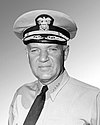
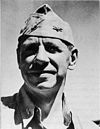


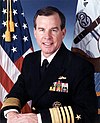
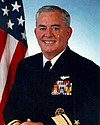






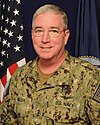







0 Response to "Where Is the Nearest Aircraft Carrier to the Persian Gulf ?"
ارسال یک نظر